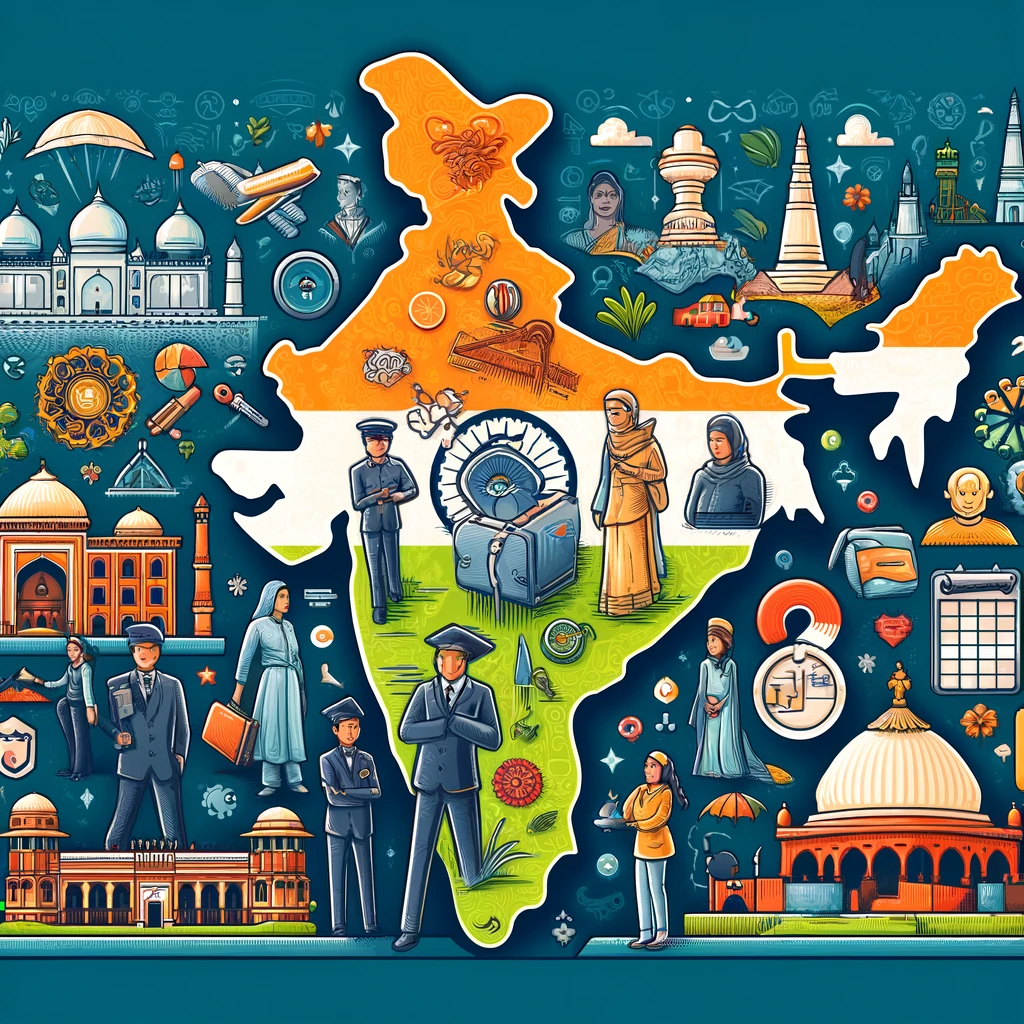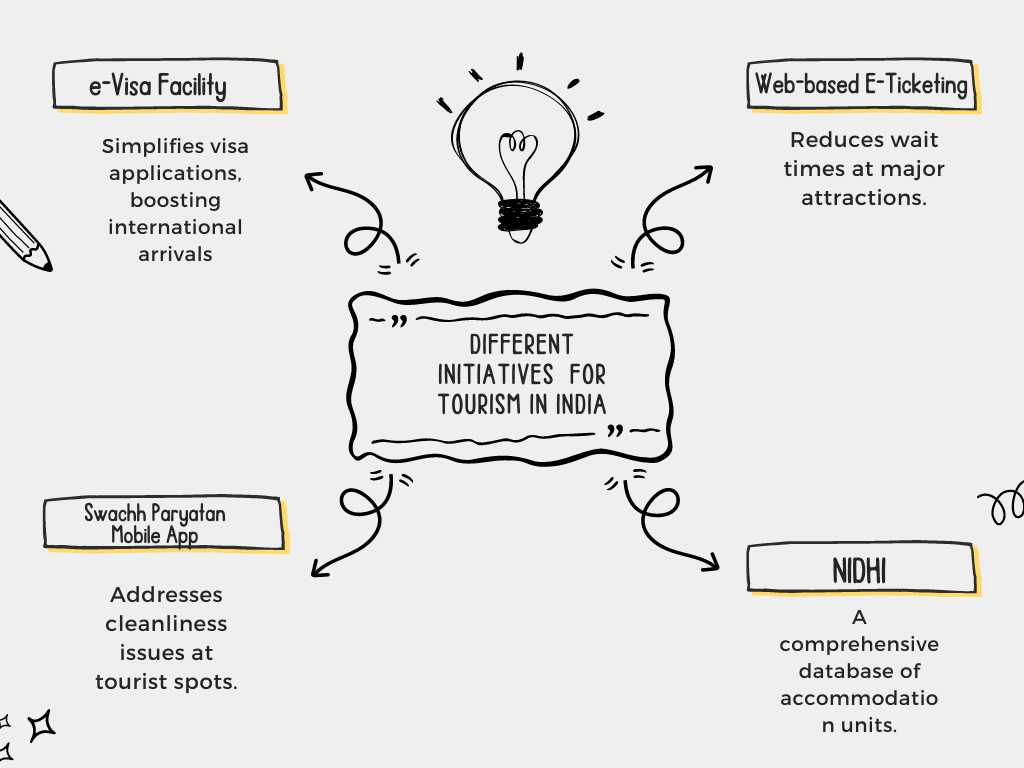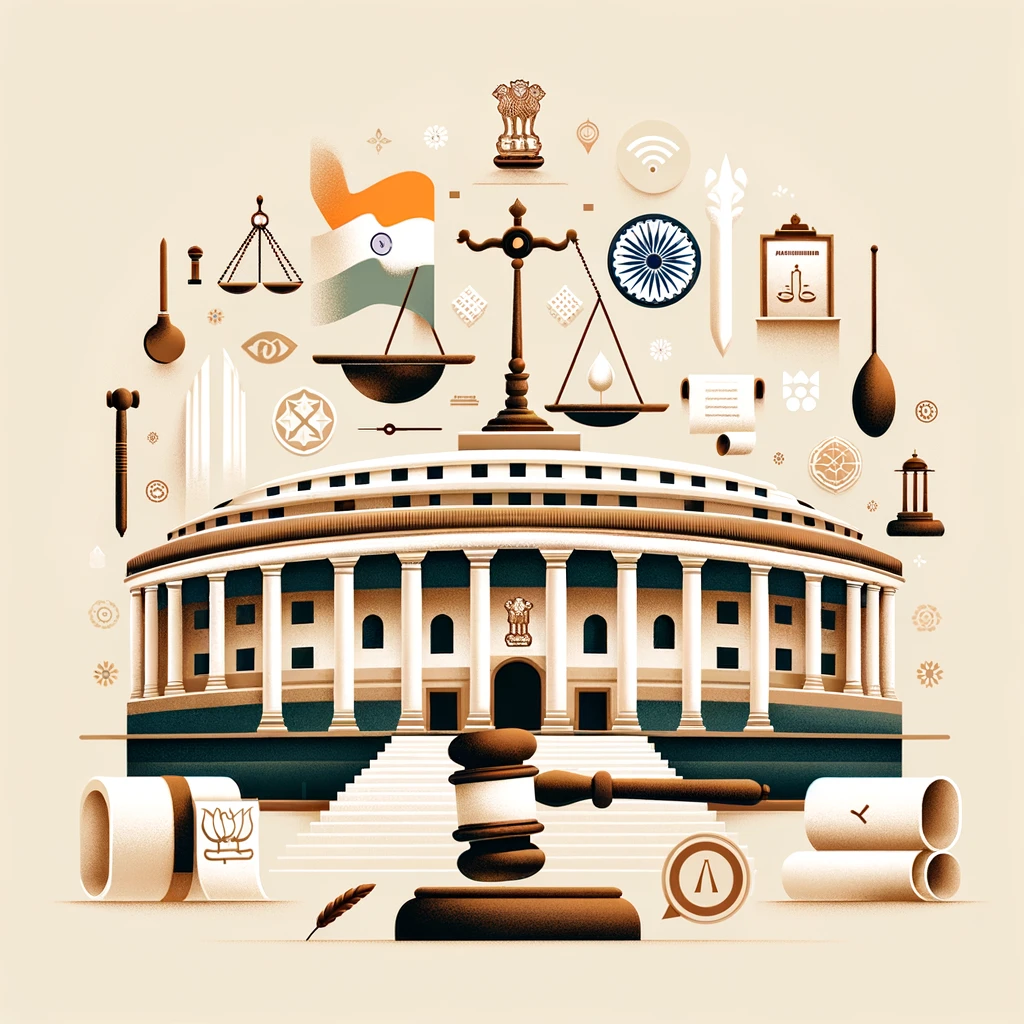The “Hunar se Rozgar” (Skill to Employment) scheme, launched in 2009 by the Ministry of Tourism, focuses on training school dropouts for employment or self-employment. This editorial highlights the scheme’s role in the tourism sector, its potential to bridge the gap between skilled workforce demand and supply, and its impact on employment opportunities. By strengthening the tourism sector, this initiative can attract more participants and foster employment within the industry.
Origin of the Article
This editorial is based on “The skilling potential of tourism” published in The Business Line on 28/05/2024. The article explores the “Hunar se Rozgar” scheme and its impact on tourism and employment opportunities.
Relevancy for UPSC Students
Understanding the Hunar se Rozgar scheme and its implications in the tourism sector is crucial for UPSC aspirants. It relates to topics in GS Paper 3, such as the mobilization of resources, employment, and inclusive growth.

Why in News
The “Hunar se Rozgar” scheme is in the news due to its pivotal role in addressing unemployment through skill development in the burgeoning tourism sector. Given its impact on employment and economic growth, it holds significant relevance for UPSC aspirants, particularly under GS Paper 3, which covers topics like the mobilization of resources and inclusive growth. This scheme’s potential to bridge the gap between unskilled labor and market demands aligns with previously asked UPSC questions on employment and sectoral growth, making it an essential topic for civil services examination preparation.
Current Status and Potential of India’s Tourism Sector
Economic Development
India’s tourism sector ranks among the fastest-growing economic sectors, contributing 7% to the GDP and generating significant foreign exchange. It ranks 39th on the World Economic Forum’s Travel & Tourism Development Index 2024. The cumulative FDI equity inflow in the Hotel and Tourism industry was USD 17.1 billion as of December 2023.
Employment Generation
Travel & tourism generated 32.1 million jobs in 2021, accounting for 6.9% of total employment. The hospitality industry, including hotels, restaurants, and travel agencies, employs millions of people directly and indirectly.
Tourists Arrival
Domestic tourism has been a key driver, with over 1.8 billion domestic tourist visits in 2019. Foreign Tourist Arrivals (FTAs) in December 2023 were 1,070,163, and FTAs for the year 2023 totaled 9,236,108.
Potential
India’s travel market is projected to reach USD 125 billion by FY27, with International Tourist arrivals expected to reach 30.5 million by 2028. The tourism sector is expected to account for about 53 million jobs by 2029 and record an annual growth rate of 7-9% in its direct contribution to GDP between 2019 and 2030.
Also, read about Towards Safer and Sustainable Cities.
Significance of the Tourism Sector in India
Foreign Exchange
Tourism is India’s third-largest foreign exchange earner, with international tourist influxes generating substantial revenue.
Multiplier Effect
Tourism positively impacts other sectors such as food and catering, real estate, and transportation, leading to increased demand and development.
Inclusive Growth
Tourism stimulates economic activity in remote rural, tribal, and hilly areas, unlocking cultural and ecological value. Eco-tourism initiatives have created jobs and promoted sustainable development in the northeastern states.
Inter-cultural Exchanges
Tourism fosters new ideas, promotes tolerance and acceptance of diversity, and helps build social capital.
Strategic Diplomacy Tool
Tourism enhances bilateral relations and people-to-people connections, creating sustainable bonds that ensure peace.
Various Issues Associated With the Tourism Sector in India
Inadequate Infrastructure
Many tourist destinations lack essential infrastructure, such as air, rail, road connectivity, reliable internet, hospitality, health, and sanitation facilities.
Governance Challenges
There are governance issues, including a lack of clear guidelines, poorly regulated health and hygiene standards, inefficient tourist information centers, and cumbersome visa regulations.
Multiplicity of Taxes
The tourism industry faces a complex tax structure, making it expensive in India.
Unskilled Human Resources
There is a shortage of skilled manpower in the tourism sector, including multilingual abilities and professional training.
Safety of Tourists
Safety concerns, particularly affecting women, can deter potential visitors.
Various Strategies Needed to Revamp the Tourism Sector
Improving Connectivity and Infrastructure Development
Enhancing transportation links to remote tourist destinations is crucial. Public-private partnerships or government investments can drive these improvements.
Tax Reform and Harmonization
Simplify the complex tax structure and harmonize taxes to create a more uniform and transparent system, reducing administrative burden and lowering GST rates.
Focusing on Safety and Security
Deploy tourism police, implement strict security protocols, and promote safe travel practices to enhance tourists’ confidence.
Training Programs
Provide comprehensive training programs focusing on customer service, cultural sensitivity, and language skills to improve service quality.
Enhancing Online Presence
Utilize social media, travel websites, and virtual tours to boost visibility. A digital, unified system to promote tourist destinations can significantly boost tourism.
Different Initiatives Related to Tourism in India
To boost tourism, the Indian government has launched several initiatives aimed at enhancing tourist attractions, improving policies, and leveraging digital tools. These efforts aim to make tourism more accessible, enjoyable, and sustainable.
Boosting Tourist Attractiveness
Swadesh Darshan Scheme: Develops theme-based tourist circuits like the Buddhist Circuit and Eco Circuit.
PRASAD Scheme: Focuses on developing and beautifying pilgrimage sites.
HRIDAY: Aims to preserve and revitalize heritage cities.
Paryatan Parv: Encourages domestic tourism through cultural events.
Dekho Apna Desh Initiative: Promotes exploration of India’s diverse landscapes.
Ek Bharat Shreshtha Bharat: Enhances cultural integration through state pairings.
National Tourism Policy, 2022
The policy focuses on green tourism, digital tourism, destination management, skilling in the hospitality sector, and supporting MSMEs to improve tourism framework conditions.

Digital Initiatives
e-Visa Facility: Simplifies visa applications, boosting international arrivals.
Web-based E-Ticketing: Reduces wait times at major attractions.
NIDHI: A comprehensive database of accommodation units.
Swachh Paryatan Mobile App: Addresses cleanliness issues at tourist spots.
The Hunar Se Rozgar Tak Scheme
The Hunar Se Rozgar Tak (HSRT) scheme, launched in 2009–10, aims to bridge the gap between the demand and supply of a skilled workforce by providing vocational training to youth, enhancing their employability, and promoting self-employment.
About
Launched by the Government of India in 2009–10, the HSRT scheme is fully funded by the Ministry of Tourism. It aims to create employable skills among youth.
Objective
The scheme offers short-term vocational training to non-literate, semi-literate, and educated unemployed youth aged 18–28 to improve their skills and employability.
Target Groups
It focuses on school dropouts, unemployed youth, adolescent girls, housewives, and other marginalized groups.
Strengths
The scheme’s core principles of providing vocational training and employment opportunities resonate with the public and align with broader socio-economic goals, making it a desirable initiative.
Weaknesses
– Bureaucratic Delays: Procrastination from both government and private institutions hinders progress. Streamlining processes via an online portal is needed.
– Lack of Awareness: Insufficient IEC activities lead to the scheme’s failure.
– Implementation Hindrances: Restrictive guidelines favor government institutions, limiting the scheme’s reach.
Strategies Needed to Revamp the Tourism Sector
To address the challenges and enhance the tourism sector, several strategies are needed. These include improving connectivity and infrastructure, tax reform, focusing on safety, comprehensive training programs, and enhancing the online presence of tourist destinations.
Improving Connectivity and Infrastructure Development
Enhancing transportation links to remote tourist destinations through public-private partnerships or government investments is crucial. The Konkan Railway Corporation Limited (KRCL) is an example of successful infrastructure development.
Tax Reform and Harmonization
Simplifying the complex tax structure and harmonizing various taxes can reduce administrative burdens and make tourism more cost-effective. Lowering GST rates can make tourism more affordable for visitors.
Focusing on Safety and Security
Ensuring tourist safety through measures like deploying tourism police, implementing strict security protocols, and promoting safe travel practices will enhance tourists’ confidence in India.
Training Programs
Providing comprehensive training programs focusing on customer service, cultural sensitivity, and language skills can improve service quality. Schemes like Hunar se Rozgar Tak can be optimized to promote tourism and employment.
Enhancing Online Presence
Utilizing social media, travel websites, and virtual tours can boost the visibility of tourist destinations. A digital unified system and initiatives like “Ek Bharat Shreshtha Bharat” can significantly promote tourism.
Conclusion
Revamping India’s tourism sector is not just an economic imperative but also a significant socio-cultural opportunity. By leveraging schemes like Hunar Se Rozgar Tak and embracing strategic reforms, India can bridge the employment gap and foster inclusive growth. As future policymakers, civil service aspirants must envision a tourism industry that epitomizes India’s rich heritage, ensuring sustainable and holistic development.
| UPSC Civil Services Examination, Previous Year Question (PYQ) Mains Q. The states of Jammu and Kashmir, Himachal Pradesh, and Uttarakhand are reaching the limits of their ecological carrying capacity due to tourism. Critically evaluate. (2015) Q. Discuss the potential of the ‘Hunar se Rozgar Tak’ (HSRT) scheme in addressing the skill gap and unemployment in the tourism sector. What measures can be taken to enhance the effectiveness of such initiatives? |



